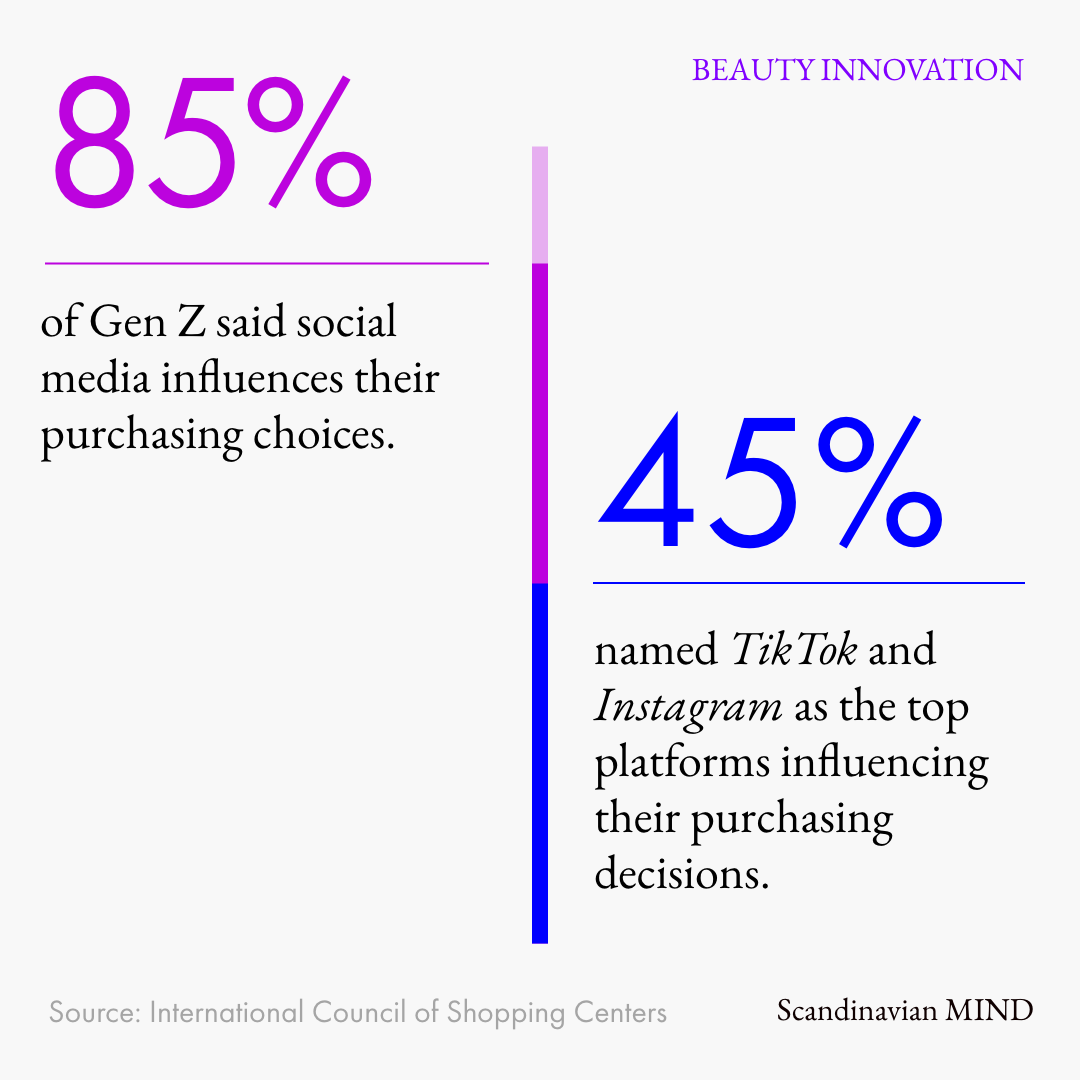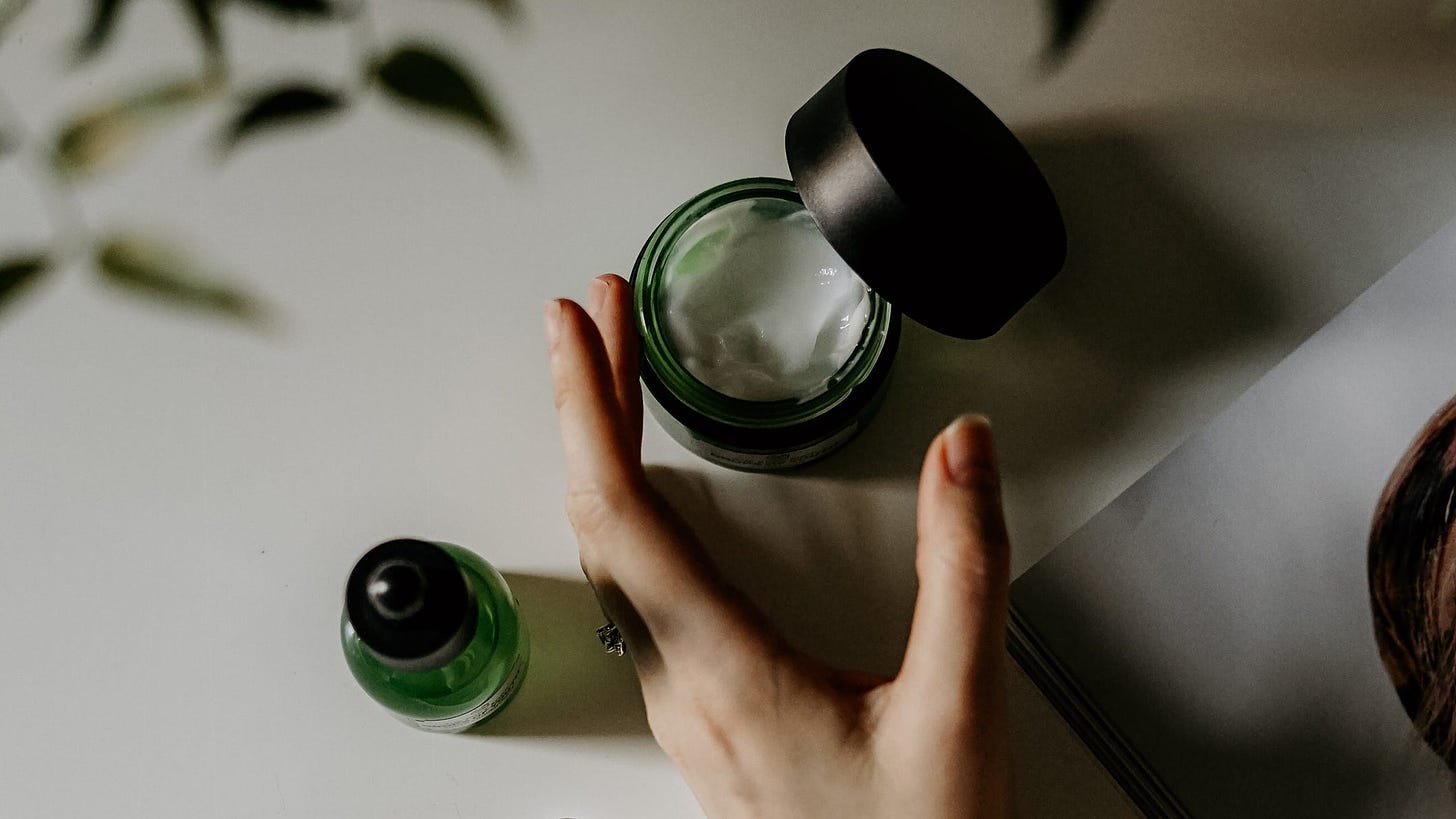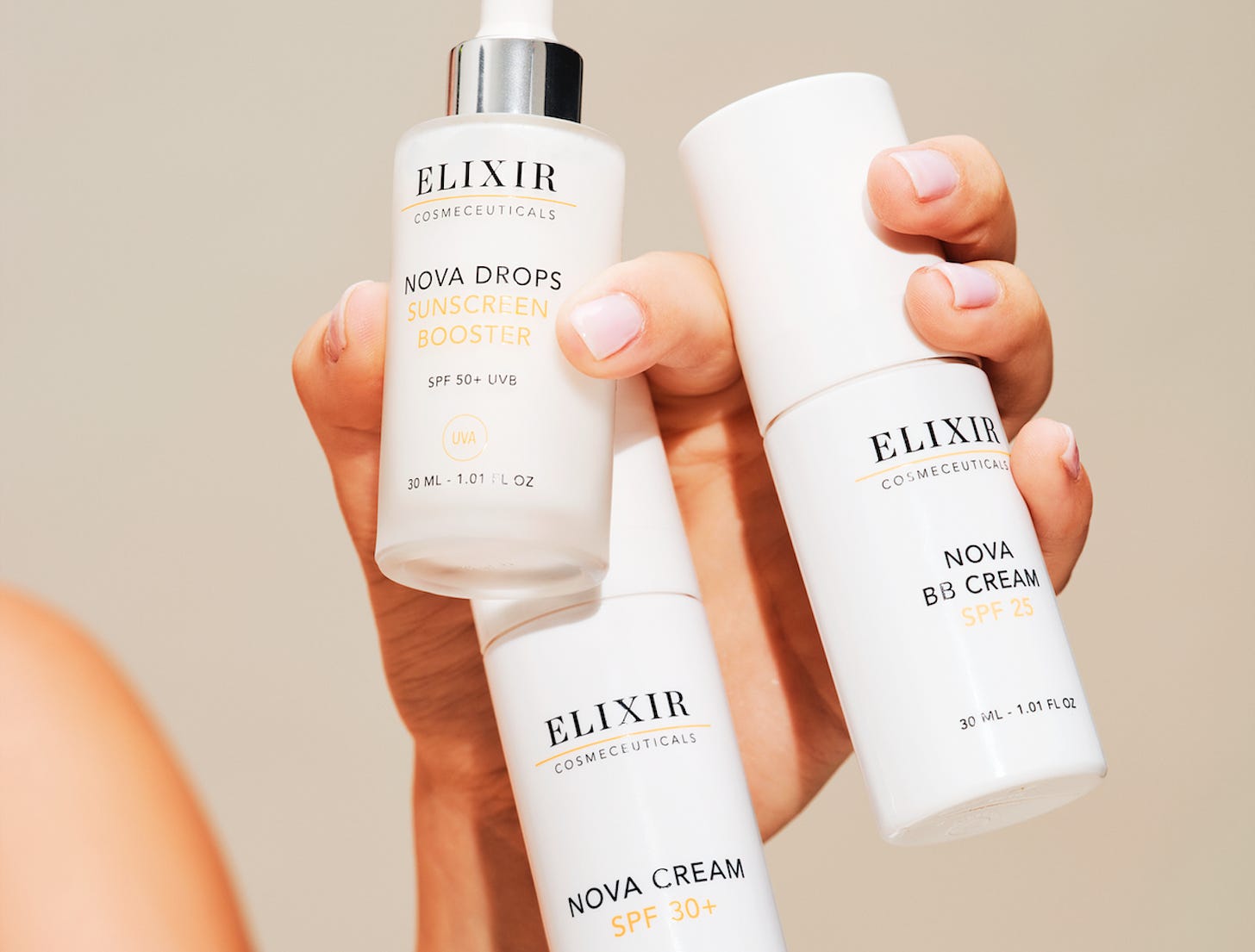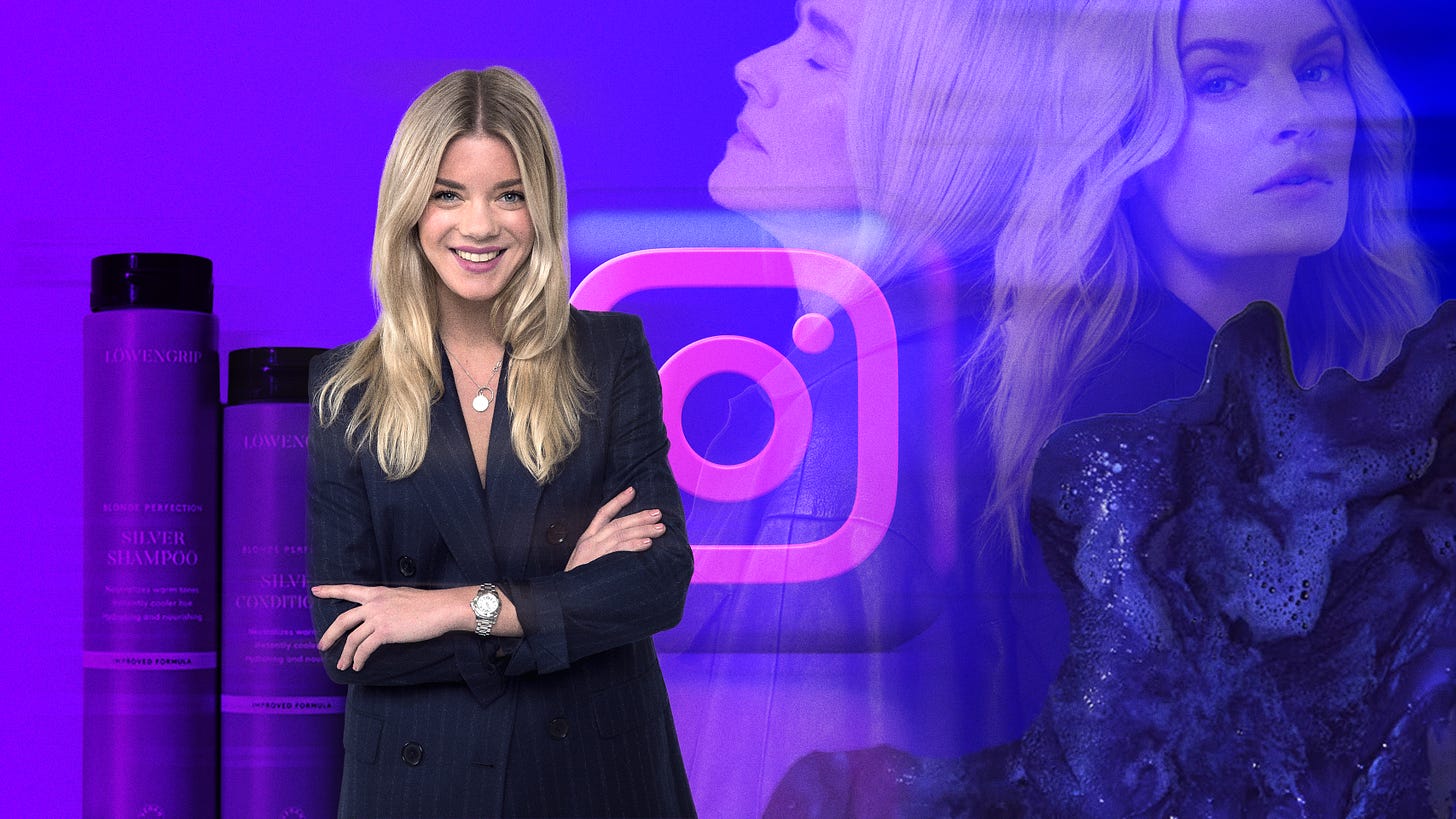How to use your followers to create a better beauty brand
Lessons learned from years of successfully interacting with the consumers. Plus: patented molecules, retail in metaverse, and the future of packaging.
IN THIS ISSUE
Case study: Löwengrip’s close interaction with its social following
New numbers on the growing ”social commerce” phenomenon
Sun protection made easier
How to cater to the rising curly hair movement
Challenges and opportunities in the virtual worlds
Do you follow?
Last year saw the number of active social accounts hit 3.96 billion. The most popular platforms come and go but the growth is set to continue, with a projected increase to almost six billion in 2027 (Statista). As this issue’s Stat of the week shows, the sales opportunities from social commerce for brands are huge. An Accenture report has stated that numbers will more than double by 2025, hitting $1.2 trillion. According to Sprout Social’s Social Shopping in 2022 study, 40% of consumers were finding the perfect product through a brand’s organic post. The equivalent number for finding the perfect product by ”Seeing a targeted ad” was 49%.
”Social commerce makes it easy to convert customers where they are since they can directly make purchases on the platform,” the company wrote in a social commerce insight piece last week.
Global digital consumer products platform Branded explains how Instagram represents a ”cyclical buying process” for beauty brands:
”Shoppers find inspiration from influencers or friends, buy the product in store or online, share their updates to their followers and friends through stories, reels, or grid content, and then finally, the cycle starts over again.”
If you’re keen to further develop your social media presence, this issue of Beauty Innovation is here to help. In our insight piece How to use your followers to create a better beauty brand later in this email, we meet Fanny Sandström. The Brand Director of Swedish beauty company Löwengrip shares experiences from many years of using the brand’s social following when developing new products.
”Brands that can maintain a close dialogue with consumers, creating products the consumers want and need, rather than just launch yet another product, will see consumers buying,” she says.
We also sit down with Lars Fredriksson, founder of skincare brand Verso, to learn about their journey of creating a brand-new molecule. Any lessons learned from this eight-year-long process? ”It was well worth it!”
In our World view reporting, we share how a recent acquisition is set to create a new Nordic beauty leader. The Unilever executive provides predictions on the future of beauty packaging and Mintel has the latest on inclusivity and diversity trends in cosmetics.
We hope you enjoy this edition of Beauty Innovation. See you again next week.
PS: Was this email forwarded to you? Click here to sign up for free.
STAT OF THE WEEK

SCANDINAVIAN MIND X TRADE PARTNERS SWEDEN
Trade can be complex — but important help is just one click away
We speak to Helena Waker, CEO of Trade Partners Sweden, on why a strong network of experts is key when growing a beauty brand.
TOP STORIES
This week’s top stories and interviews from scandinavianmind.com
The man and the molecule
Verso’s founder Lars Fredriksson on the eight-year-long process behind the Near1 technology — and how it was all worth it.
Elixir Cosmeceuticals presents innovative range designed to simplify daily sun protection
Nova Collection includes sun drops that can be mixed with any skincare product, instantly transforming it into a sunscreen.
Clinique mimics iconic beauty counter for the opening of metaverse retail experience
An open, virtual world creates challenges and opportunities, according to Charmi Panchal, Executive Director of the brand’s Global Ecommerce.
Curls are on the rise — new Maria Nila series aims to cater to this growing global movement
Also responding to shifting consumer behaviour, offering consumers to create a personalised routine.
WORLD VIEW
A briefing on innovations in the global beauty industry
Matas Group to create Nordic beauty leader with acquisition of Kicks group
Global Cosmetics News: Matas Group has announced that it has signed an agreement with Axel Johnson to acquire Kicks Group for DKK1.366 million. The acquisition is expected to close in the third quarter of 2023 and will be fully debt financed.
The future of beauty packaging: Three questions for Frédéric Dreux, Unilever
Premium Beauty News: Committed for several years to a stringent roadmap for reducing plastic waste, beauty and personal care giant Unilever is implementing new solutions for transforming the packaging of its premium products.
Mintel Director on impactful inclusivity and diversity trends in cosmetics
CosmeticsDesign Europe: Mintel recently reporting that ”50% of consumers shop from brands with diversity or inclusivity, and 86% of beauty product users say they would like to see realistic signs of aging depicted in beauty advertisements”.
INSIGHTS
How to use your followers to create a better beauty brand
By JOHAN MAGNUSSON
Fanny Sandström, Brand Director of Swedish beauty company Löwengrip: ”Brands that can maintain a close dialogue with consumers, creating products the consumers want and need, rather than just launch yet another product, will see consumers buying.”
We often hear brand representatives stating the importance of transparency and staying close to their end consumers. Fanny Sandström explains how Löwengrip has taken this one step further.
— We interact with them; product research and consumer insights are sourced from social media, she explains. They also test our product samples, together with the product development teams, chemists, and experienced skin therapists.
The brand uses different platforms for different purposes. IG Story and TikTok are mainly for interaction with consumers but also for different polls in, for instance, webinars.
— Around once or twice per month, we have free webinars for retail and pharmacy staff who attend in their free time to learn more about the brand and products. It’s usually 250-350 people in attendance and is also a great way to learn from the salespeople, who are very knowledgeable on products, the market, and consumer requests. Through the polls that we use in these webinars, we can gather insights on, for instance, preferences and product usage.
— We highly value our consumers’ input on new product development and always make sure to involve them as much as we can, which is one of our main reasons to engage our consumers, through IG polls, competitions, and UGC (user-generated content). We want our community to actually be, and to feel like, an important part of our brand and product development.
— We also know that our consumers get more excited when it comes to new product drops and behind-the-scenes content, such as campaign shoots. That’s why we try to create content that makes them feel closer to the full product development or campaign process rather than only showing them the final results, Sandström explains.
The company recently looked into its Blonde Perfection – Silver Series to test two main theories with the followers.
— Firstly, that ’haircare is the new skincare’, and that they want high-performing haircare products, delivering instant and long-term results from efficient ingredients. And secondly, that there was a gap in the market for silver haircare products which we could fill, such as the fact that there were almost no leave-in silver products available.
— Testing these theories on our consumers through social media means that we can listen and co-create and we also believe that transparency builds trust. Consumers are demanding more of the brands developing the products. Brands that can maintain a close dialogue with consumers, creating products the consumers want and need, rather than just launching yet another product, will see consumers buying. They demand transparency and have high standards when opening their wallets. In order to reach them, brands should stay curious and listen to the consumer — and use that to innovate! says Sandström. She adds:
— Using social media to communicate with consumers has been part of the brand DNA since the start, building a following. We can stay close to both our customers and the production which we have in Sweden.
How was the feedback from the followers?
— We did get both theories confirmed this time — it was very useful in directly guiding us to what we were to launch.
— Regarding if haircare is the new skincare, consumers were surveyed to demand more from haircare. As they know what benefits to expect from their skincare, 88% want to have colour-protecting properties in their haircare and the same share, 88%, want heat-protecting properties. A majority, 79%, say it is hard to keep chemical-treated hair healthy and a whopping 82% say they could go longer between hair appointments if the colour wasn’t becoming brassy or warmer over time. Save that money! I’d say.
Most importantly, according to Sandström, consumers have learnt the benefits of skincaring ingredients and want these benefits to go into their haircare.
— Hyaluronic acid was surveyed in our poll to be wanted in the haircare by 95% of the respondents as they’re looking to keep hydration in their hair. The same number, 95%, would be wanting a quick fix which could neutralize their warmer hue to a cooler. We gathered this info and then did our own market research on what products were missing, then aimed to come up with solutions.
When is it better not to use your end consumers in your process?
— There are limitations to what they can input on due to the technical aspects of developing products and the safety of them. Also when you want to be innovative, it can sometimes be a limitation as the majority of consumers aren’t first movers. So, a poll asking for complete newness is more likely to request already known solutions or already preferred products which sometimes wouldn’t bring newness.
”Everyone isn’t as beauty-nerdy as the development team”
I assume that you as a brand have learned a bunch of things from doing it.
— All the time! It is a great way to check ideas and test trends. But also to have the consumers be part of the decision making, by deciding on things like product names — which is making our job easier. A very recent example is for a product we are launching this fall. When checking which ingredient the consumers thought was most important in this particular product, the development team thought a ’newer’, less ’trendy’ ingredient was most interesting. However, when testing it with the consumers the knowledge and awareness of the benefits of this ingredient was not so sought after. This served as a quick reminder that everyone isn’t as beauty-nerdy as the development team and might not value the same things. By the way, we formulated the product with both ingredients but learnt which ingredient was important to market to the consumers.
Where do you get the best engagement?
— Like many other brands and social media users overall, we have experienced a shift in which platforms engage customers the most, from Instagram and successively more on to TikTok. Our main following base is still on Instagram and this ongoing platform shift has not really affected our engagement rate yet. Our customers, ambassadors, and others still prefer to engage with, and reach out to us, there although we see more and more interest in our content on TikTok as well, says Sandström. She adds:
— Our followers are typically the most active late afternoon into the night on weekdays, but our engagement varies a lot depending on content. The followers show a higher engagement when it comes to new product announcements, polls, influencer- and certain UGC content, like tutorials.
KEY TAKEAWAYS
Inviting retail and pharmacy staff to events like free webinars is a great way to learn from the salespeople, who are very knowledgeable
Consumers get more excited when it comes to new product drops and behind-the-scenes content, such as campaign shoots
Followers show a higher engagement when it comes to new product announcements, polls, and influencer content like tutorials
Having the consumers be part of the decision-making on things like product names can make a job easier









